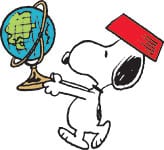I am a confused as to how a chart plotter works.
Say I am in Hawaii and want to sail the great circle (shortest path) to Cape Horn. If I zoom out on my chart plotter where I can see both Hawaii (my location) and Cape Horn and point the boat in that direction, I will see a line from Hawaii to Cape Horn.
If I follow thin line is that the great circle route?
Similar situation, if you have a large scale chart of the pacific, and it shows Hawaii and Cape Horn- how do you determine the great circle route? I do not think if you draw a line between the two, and find the compass heading from the start location (Hawaii), that it will be the great circle route- but I might be wrong.
Seems you need to use a globe when navigating long distances.
Say I am in Hawaii and want to sail the great circle (shortest path) to Cape Horn. If I zoom out on my chart plotter where I can see both Hawaii (my location) and Cape Horn and point the boat in that direction, I will see a line from Hawaii to Cape Horn.
If I follow thin line is that the great circle route?
Similar situation, if you have a large scale chart of the pacific, and it shows Hawaii and Cape Horn- how do you determine the great circle route? I do not think if you draw a line between the two, and find the compass heading from the start location (Hawaii), that it will be the great circle route- but I might be wrong.
Seems you need to use a globe when navigating long distances.






